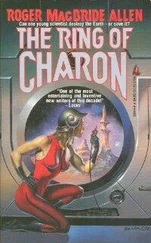Roger Allen - The Shattered Sphere
Здесь есть возможность читать онлайн «Roger Allen - The Shattered Sphere» весь текст электронной книги совершенно бесплатно (целиком полную версию без сокращений). В некоторых случаях можно слушать аудио, скачать через торрент в формате fb2 и присутствует краткое содержание. Год выпуска: 1994, ISBN: 1994, Издательство: Tor Books, Жанр: Фантастика и фэнтези, на английском языке. Описание произведения, (предисловие) а так же отзывы посетителей доступны на портале библиотеки ЛибКат.
- Название:The Shattered Sphere
- Автор:
- Издательство:Tor Books
- Жанр:
- Год:1994
- ISBN:0-312-85734-9
- Рейтинг книги:5 / 5. Голосов: 1
-
Избранное:Добавить в избранное
- Отзывы:
-
Ваша оценка:
- 100
- 1
- 2
- 3
- 4
- 5
The Shattered Sphere: краткое содержание, описание и аннотация
Предлагаем к чтению аннотацию, описание, краткое содержание или предисловие (зависит от того, что написал сам автор книги «The Shattered Sphere»). Если вы не нашли необходимую информацию о книге — напишите в комментариях, мы постараемся отыскать её.
.
Humans face two enemies—the implacably powerful Charonians who kidnapped the Earth, and the mysterious Adversary, before whom the Charonians quake in fear. Can an unlikely combination of scientists, corpses, dictators, and professional troublemakers withstand both threats and return the Earth to its proper place in the Solar System?
The Shattered Sphere — читать онлайн бесплатно полную книгу (весь текст) целиком
Ниже представлен текст книги, разбитый по страницам. Система сохранения места последней прочитанной страницы, позволяет с удобством читать онлайн бесплатно книгу «The Shattered Sphere», без необходимости каждый раз заново искать на чём Вы остановились. Поставьте закладку, и сможете в любой момент перейти на страницу, на которой закончили чтение.
Интервал:
Закладка:
Math department legend had it that Wally did not find out that the Earth had been abducted by the Charonians until six months after the fact, and only then because he was asked to design a simulation of the Multisystem’s gravity-control system. He went from a steadfast belief that the rest of the faculty were pulling yet another elaborate practical joke on him directly to a steadfast acceptance and an utter lack of interest in the new situation. It did not affect him personally, therefore it did not exist.
Until now, of course. He had to simulate it now, and therefore reality affected him. A rather inside-out way of looking at the world.
Sianna stood there a moment longer, allowing herself a grudging admiration of the Multisystem’s might and grandeur. The glowering Sphere, the Captive Suns gleaming bright and perfect against the inky blackness of the dust clouds, wheeling about the sky in their forced, artificial orbits, shining yellow jewels imprisoned in a setting of terrible beauty and ponderous strength. The Captive Worlds, gleaming dots of blue-green life and light in the darkness, the ruination of their surfaces invisible at this scale. It was beautiful, in its own horrible way. She felt a deep pang of guilt in her gut for admitting even that much.
A sadness, a feeling of loss and tragedy, hung over the sullen domain of the Sphere. She glanced behind herself and saw the Earth hanging there, a tiny dot over her left shoulder. She felt a tear in her eye, and blinked to clear her vision.
“All right, Wally,” she said, her voice not quite steady. She looked back toward the center of the tank, where the Sphere glowed its angry red. “Show me Sakalov’s latest.” She felt relieved to see the Multisystem imagery vanish, and the simulated Sphere swell up into a ball three meters across.
Sianna watched it grow, some part of her still thinking, still hoping, that maybe Sakalov might have found the key, the answer.
If he had, it was a neat trick. There was damn all little to go on. The Sphere was perfectly round, rotated slowly about its axis, was 2.15 astronomical units, or just under three hundred million kilometers, in diameter. It was 232 astronomical units from Earth, and its color shifted from one shade of red to another, perhaps in relation to energy input or output. A pattern of lines resembling lines of longitude and latitude were visible on its surface. Its mass was impossible to estimate. It radiated little more than perfectly ordinary visible light, a bit of ultraviolet, a lot of radio frequency energy, and a fair amount of short and long infrared.
That was all that was truly known. Any ideas about the rest—what it was made of, how or why the Charonians had built it, how old it was, what it was for—were merest guesswork. For the last five years, Professor Yuri Sakalov had been working over that pathetic supply of information, struggling to divine the true nature of the Sphere, to pinpoint the location and nature of Charon Central, the control center for the entire Multisystem. Sianna had lost count of the theories Sakalov had presented.
Against all sense and logic, Sianna found herself standing there in the darkness, watching Wally’s light show, hoping against hope that Sakalov had finally found Charon Central.
For even with all her railing against it and objections to it, Sianna had to admit that the whole idea of the Charon Central was a wonderfully seductive, dazzling notion.
One thing was clear from everything transmitted back from the disaster in the Solar System: the Charonians worked to a very clear hierarchical pattern. There had to be a top to the pyramid.
Many of each lower-function type served a single, higher-function type, which in turn served a still higher function master. Study of video from the attack on Mars as transmitted back by the Saint Anthony made that clear: a gang of mindless carrier bugs worked under a somewhat more sophisticated scorpion-form, and all the hundreds of scorps were controlled by a single Lander. All the thousands of Landers were controlled by the Lunar Wheel, buried deep under the Moon’s surface.
Mind, that was a greatly simplified example, leaving out a number of intermediate forms. And there were many other subsidiary forms in other sub-hierarchies, and any number of ideas of how exactly all the hierarchies nested into one another. The whole Sphere system was a rigid hierarchal command structure—but where and what was the ultimate commander?
Maybe, just maybe, Wally was about to show her. “All right, that’s the Sphere exterior as we know it,” Wally said from behind her.
Sianna stepped closer and examined the image. “Hold it a second, Wait. Something real small is orbiting the Sphere around its equator. That some part of your theory?”
“No, that’s real, not hypothetical,” Wally answered, clearly pleased that Sianna had asked. The answer gave him a chance to show off his thoroughness. “Dr. Sakalov detected that body a few weeks ago. Very dark, very faint, real small, not more than a few thousand kilometers across. Just some piece of skyjunk, but it shows how detailed our model of the Multisystem is.”
“I guess so,” Sianna said, a bit doubtfully.
“Anyway, that’s what we know about the Sphere,” Wally said. “Now let me show you what Sakalov thinks is inside.”
Sianna watched the image of the Sphere shift and change, and found herself thinking back on all the old theories she had heard before.
The Sphere is hollow, with a standard G-type star inside. Charon Central is located on a planet orbiting that star within the Sphere . Except every calculation showed that the infrared waste heat plus the energy needed to keep the stars and planets in their courses required somewhat more energy than a G star could supply. Neither could a G star provide the instantaneous energy to transit the Earth into the system. Assuming that the Sphere had been built around a star in order to collect and store its energy, either that star was of a type more energetic than a G class—unlikely, as the Dyson Sphere seemed to want only G-cIass stars and standard habitable worlds—or else whatever was in there was no longer a star: the Sphere had rebuilt the original star into something different. A matter-antimatter system, a spatial interstitial generator, or something else, something quite beyond human understanding.
The image of the Sphere transformed itself into a cutaway, showing a featureless interior with an indeterminate bright light at its center.
The Sphere is a foamed-up solid mass of extremely low density, made up of processing nodes linked by synapse-like filaments, with an unknown power source or sources embedded within it. It is itself the control center, the brain of the Multisystem . Except the Sphere was larger around than Earth’s old orbit, and speed-of-light delays alone would make such a system hopelessly impractical. A thought would take over half an hour to travel from one side of the Sphere and back again. The human brain had a signal delay on the order of one-thirtieth of a second. If that was taken as a rough upper limit for processor delay in a practical thinking machine, and one assumed thoughts moving at the speed of light, that would dictate a “brain” not much larger than the Moon. Besides, even with a hopelessly inefficient architecture and very low capacity processing nodes and synapses, what could there possibly be to think about, what problem could be complex enough, to require a “brain” the size of the Sphere?
Now the interior of the image began to resolve itself. The brightness at the center resolved itself into a churning roil of energy. Sianna recognized a fairly standard representation of a “white hole,” the point where the mass and energy that vanished down a black hole re-emerged into the outside Universe.
Читать дальшеИнтервал:
Закладка:
Похожие книги на «The Shattered Sphere»
Представляем Вашему вниманию похожие книги на «The Shattered Sphere» списком для выбора. Мы отобрали схожую по названию и смыслу литературу в надежде предоставить читателям больше вариантов отыскать новые, интересные, ещё непрочитанные произведения.
Обсуждение, отзывы о книге «The Shattered Sphere» и просто собственные мнения читателей. Оставьте ваши комментарии, напишите, что Вы думаете о произведении, его смысле или главных героях. Укажите что конкретно понравилось, а что нет, и почему Вы так считаете.









![Ширли Мерфи - The Shattered Stone [calibre]](/books/436059/shirli-merfi-the-shattered-stone-calibre-thumb.webp)


